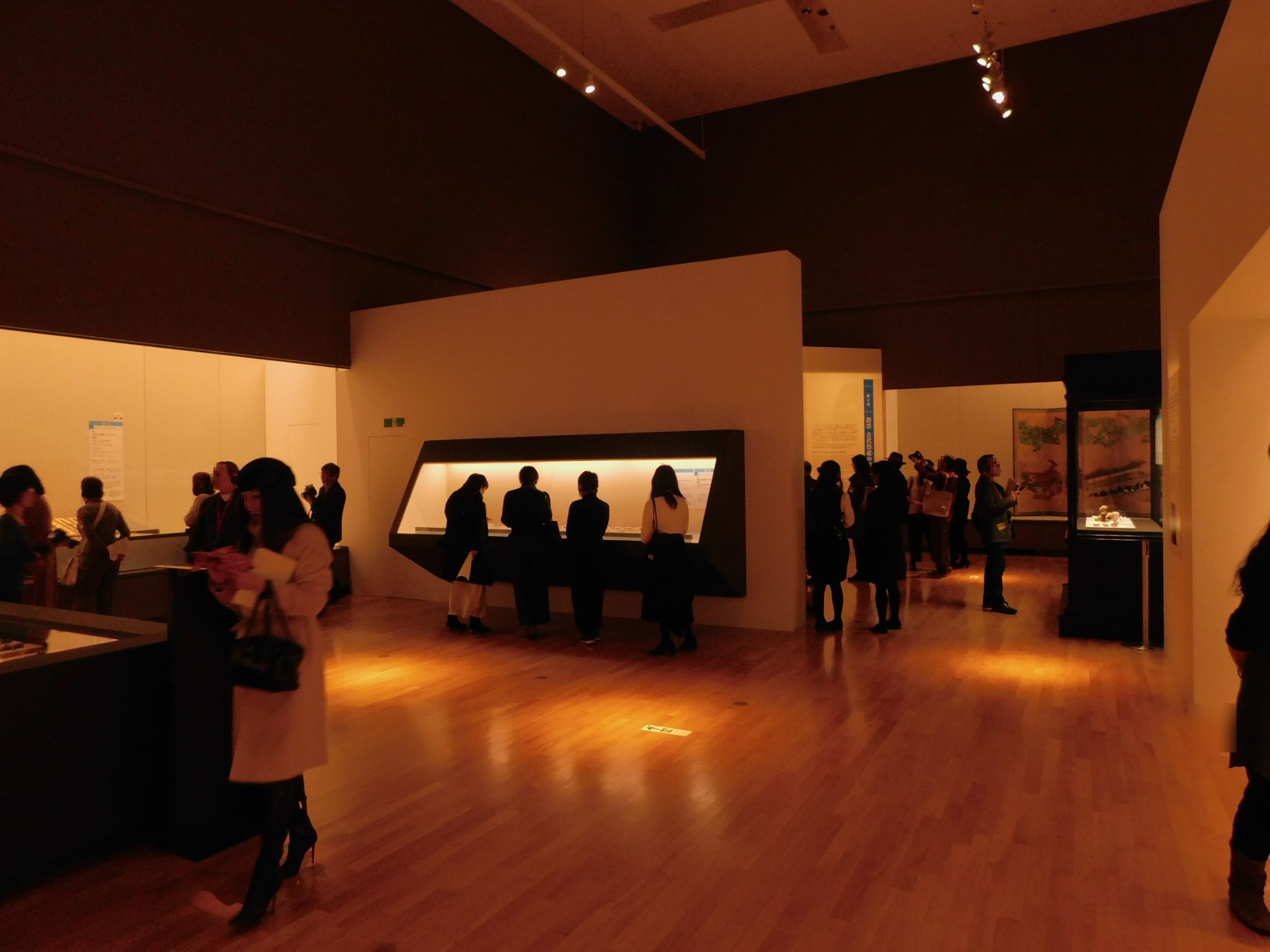Tokyo Metropolitan Art Museum

(Until Thursday, March 26, 2020) At the Tokyo Metropolitan Art Museum in Ueno, “Vilhelm Hammershøi and Danish Painting” is being held.
Prior to the event, there was a news preview the other day, so I will report on the situation.
Happiness Country / Denmark
Denmark is a constitutional monarchy in Northern Europe with a population of about 5.81 million.
The country name is derived from Dummelk, which means Old Norse (= Dane land), and is well known as a renewable energy advanced country and a high welfare state.
In recent years, their lifestyle has also attracted a great deal of attention, including being ranked number one in the United Nations’ World Happiness Rankings.
In relation to Japan, we celebrated the 150th anniversary of diplomatic relations in 2017.
The exhibition introduces some of the works of Denmark’s Wilhelm Hamashuy (1864-1916) and the surrounding works of Nordic art.
“Northern Vermeer” Hammershøi
Vilhelm Hammershøi (1864-1916), one of the leading painters of Danish painting in the late 19th century.
Hamashui begins drawing lessons at the age of eight.
After studying painting at the Royal Academy of Fine Arts in Copenhagen, Denmark, at the age of 15, he made his debut in “Portrait of Sister Ana” (1885) at the age of 21.
In the early days, I liked landscape paintings and portraits in the early days, but since the 1890s I have been drawing a lot of indoor paintings.
Strangerse 30 in the old town of Copenhagen, who moved when he was 34 in 1898.
A series of quiet and calm works depicting the apartment have won high acclaim both in and outside Denmark.
The work attracted Diagilehu of ballet Ruth and Rilke, a German poet.
It was called “Northern Vermeer” and attracted attention.

Highlight
There are four highlights of the Hamashui and Danish painting exhibition.
① About 40 Hammershøi works will be gathered
Approximately 40 Hammershøi works, including the first in Japan, will be gathered at the Tokyo Metropolitan Art Museum.
More than 10 years after the 2008 exhibition, Hammershøi works, also called “Northern Vermeer”, will return to Japan.
Please enjoy one side of that unique talent.
② Japan’s first authentic Danish painting exhibition
The golden age of Danish painting, which opened in the early 19th century in Copenhagen, the center of Nordic art.
From pure and rustic works of that era to beautiful Skain works incorporating the impressionist-style depiction of light, and the works of painters who worked in the capitals of the end of the century, who paint characteristic interior paintings. to introduce.
③Experience the Danish culture “Hyge”
Hygge means “relaxing” and “comfortable atmosphere” and is a very important Danish value.
It is the highlight of the exhibition that you can touch the Danish values.
The work of Danish painters in the late 19th century draws on Hyge, the beautiful Nordic nature, the people who live there, and the families who spend their time in a calm space.
By touching the Hughes in the works, you will be reminded of what we really want to value in life.
Featured works!
Here are some of the highlights from each chapter.
Chapter 1 Daily Praise-The Golden Age of Danish Paintings Featured Works
『A girl with a fruit basket』
A work by Constantine Hansun, son of Hans Hanson, a portrait painter.
This work is also famous for being later owned by Hamashui, and it seems that it was displayed on Strangese 25, where he spent his later years.
Is the whole work emitting a strong light, despite its subdued colors, due to the strength of the girl’s gaze looking straight at it?

『Portrait of Fredereghe Laffenbaer (née Heylop)』
Wilhelm Maastran was born in Copenhagen and studied at the Royal Academy of Fine Arts, depicting the wife of Michelle Lafenbär, a prominent Danish tax official.
Rafenbea’s wife, stretching her back and staring straight at me.
Its elegant appearance is a mixture of strength and tenderness.
St. Peter’s Basilica, which can be seen outside the window, also enhances this work.
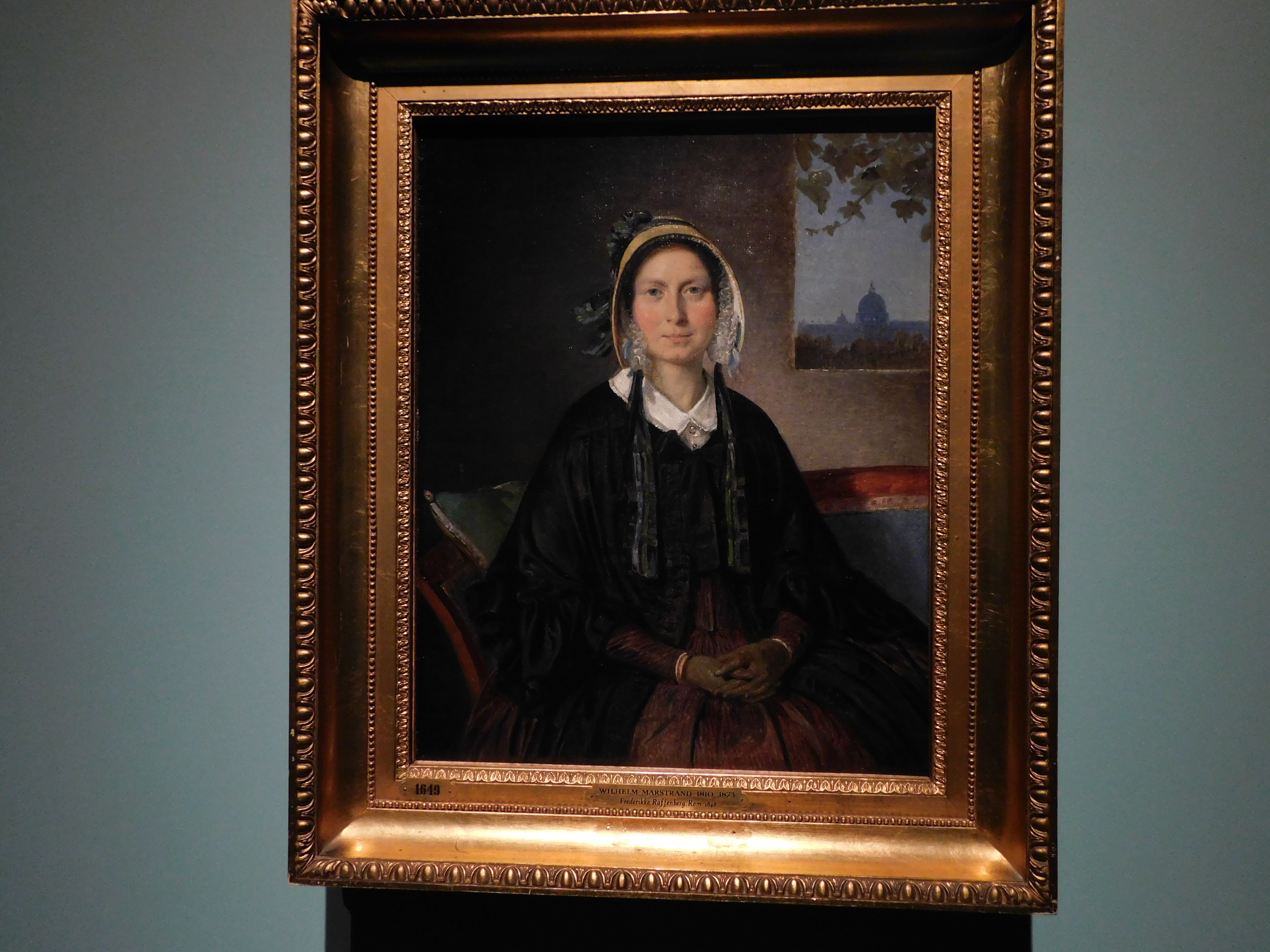
Chapter 2 Skein School and Scandinavian Light Featured Works
『Fishers rowing boats 』
A work by Michel Anga, famous as a painter representing Skain schools.
Fishermen in life jackets pushing a boat with a rugged look and going to the sea.
What is going on?
A tense situation ahead of the fishermen and the people watching it.
The intensity of the waves is increasing steadily.
It is a work with a sense of tension that is nervous and throbbing until you see it.

『 Girls and children picking flowers in the field north of Skain 』
This is also the work of Michel Anga.
Unlike the work depicting the tense situation of fishermen,
The meadow has a gentle time that lasts forever.
The girls picking flowers and their mother watching them under the everlasting blue sky.
The blue, pink, yellow, and greenery of the flowers are covered by a large sky.

Skain Museum
Chapter 3 Danish paintings at the end of the 19th century-Internationalization and the rise of indoor paintings
『Sunshine in Living Room, Painter’s Wife and Child』
A work by Viggo Pedasson, whose father is Wilhelm Pedasson, an Andersen fairy tale illustration artist.
A work depicting Vigo’s wife, Ilisabeto, easing her little daughter in the living room at home.
The gentle face of his wife who cares for her daughter and the face of her young daughter who loves moms are very dear.
It seems that even the expression of Vigo, drawing while smiling, is transmitted here.
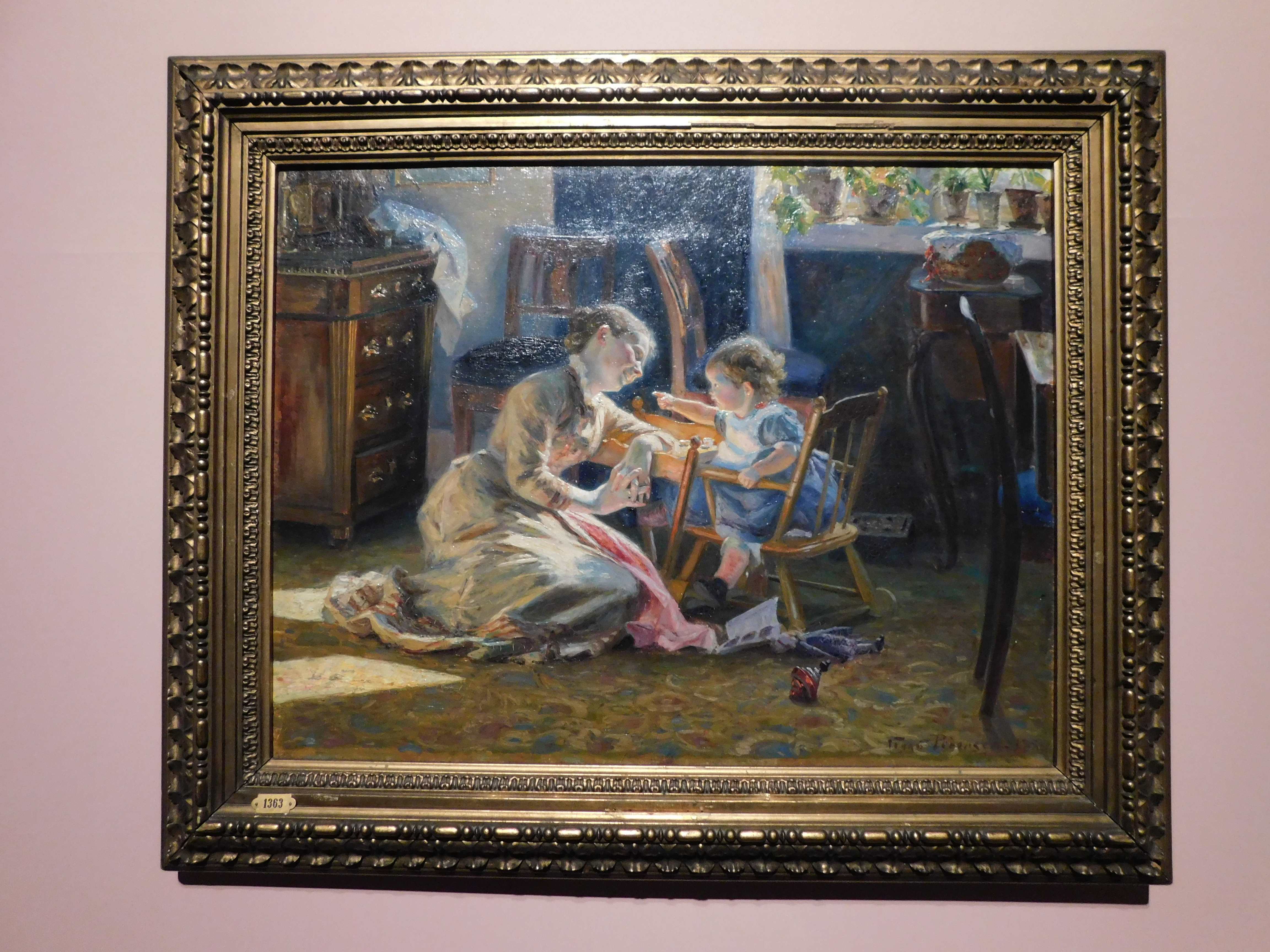
『Flower peach tree、Arles』
A work by Crestian Moaié-Pidasun, who has been in France, the Netherlands and Belgium, and is also famous for his friendship with Van Gogh in Arles.
The composition is very similar to Van Gogh’s “To Memories of Mauffet” and is believed to have been painted a few meters from where Van Gogh drew.
I was drawn into the gorgeous colors of the peach blossoms.
When approaching a little, the gentle scent of peach blossoms seems to be faintly transmitted.
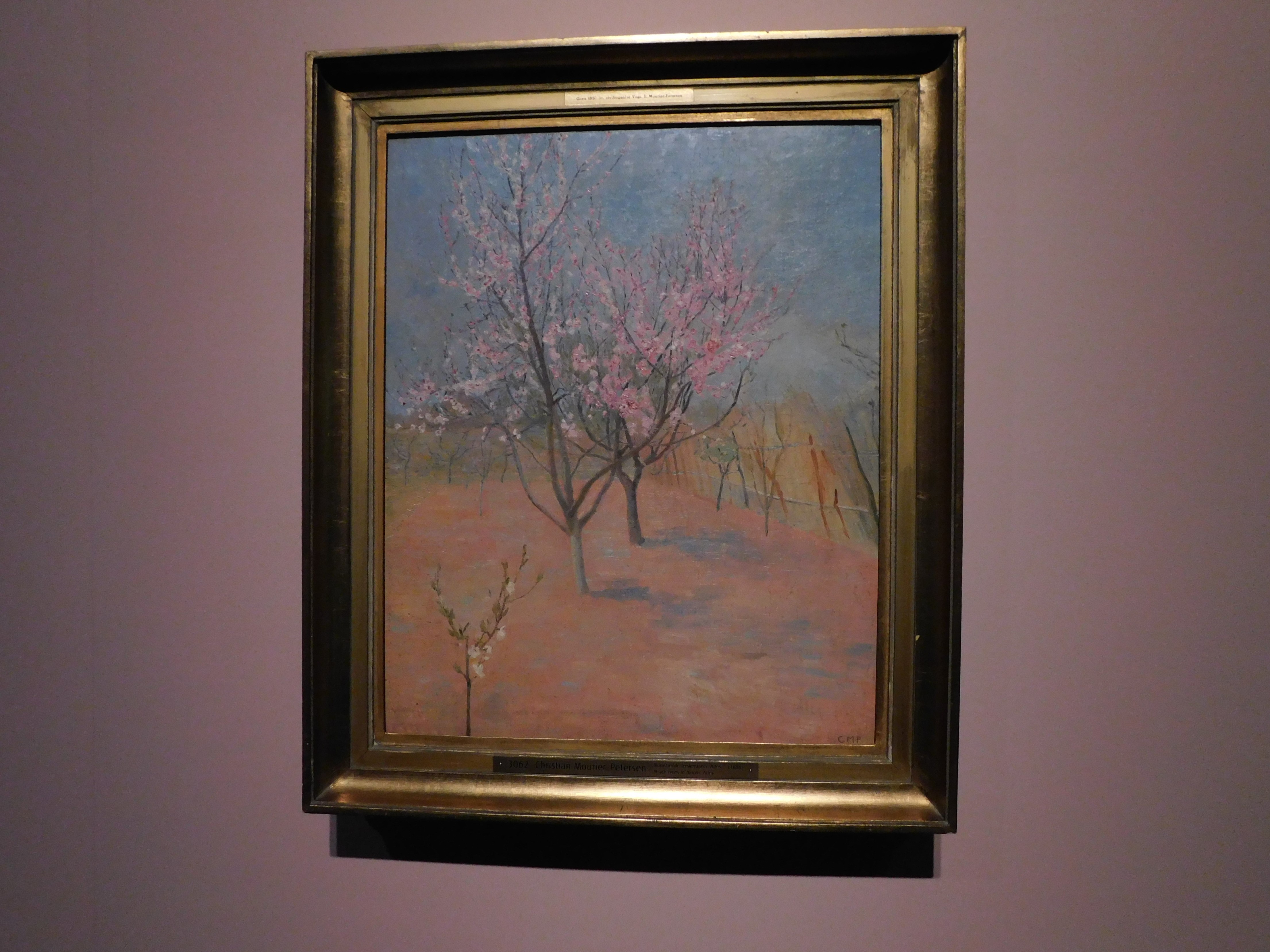
Chapter 4 Vilhelm Hammershøi-Featured Works in the Silence of the Capital
『Room-Sunshine Study, Strangese 30』
This is a work by Vilhelm Hammershøi depicting a room facing the courtyard of Strangese 30.
The light in the room coming through the elongated lattice window appears to drift steadily.
I imagine that if you open the window, the dazzling outside world is waiting.
The contrast between this bright outside world and the closed dark door is also exquisite.
Which is real and which is unreal?

『Bedroom』
A work depicting the bedroom of Vilhelm Hammershøi of Labex Ali.
Two curtains hanging on the room
The light coming in from here is very soft.
Due to the light, the woman’s profile looking out of the window seems to be smiling somewhere. What are you looking at?
A purple vase placed in the center of the window tightens the interior painting.

Conclusion
I have reported on the press preview of “Vilhelm Hammershøi and Danish Painting Press Preview Report”.
After more than 10 years, Hamashui’s works and other Danish paintings have reunited in Japan.
By touching these Danish works and cultures at the exhibition, you will discover new perspectives and values.
This exhibition is a valuable opportunity to introduce the first Danish painting in Japan at once.
Why don’t you visit the “Vilhelm Hammershøi and Danish Painting” at the Tokyo Metropolitan Art Museum?
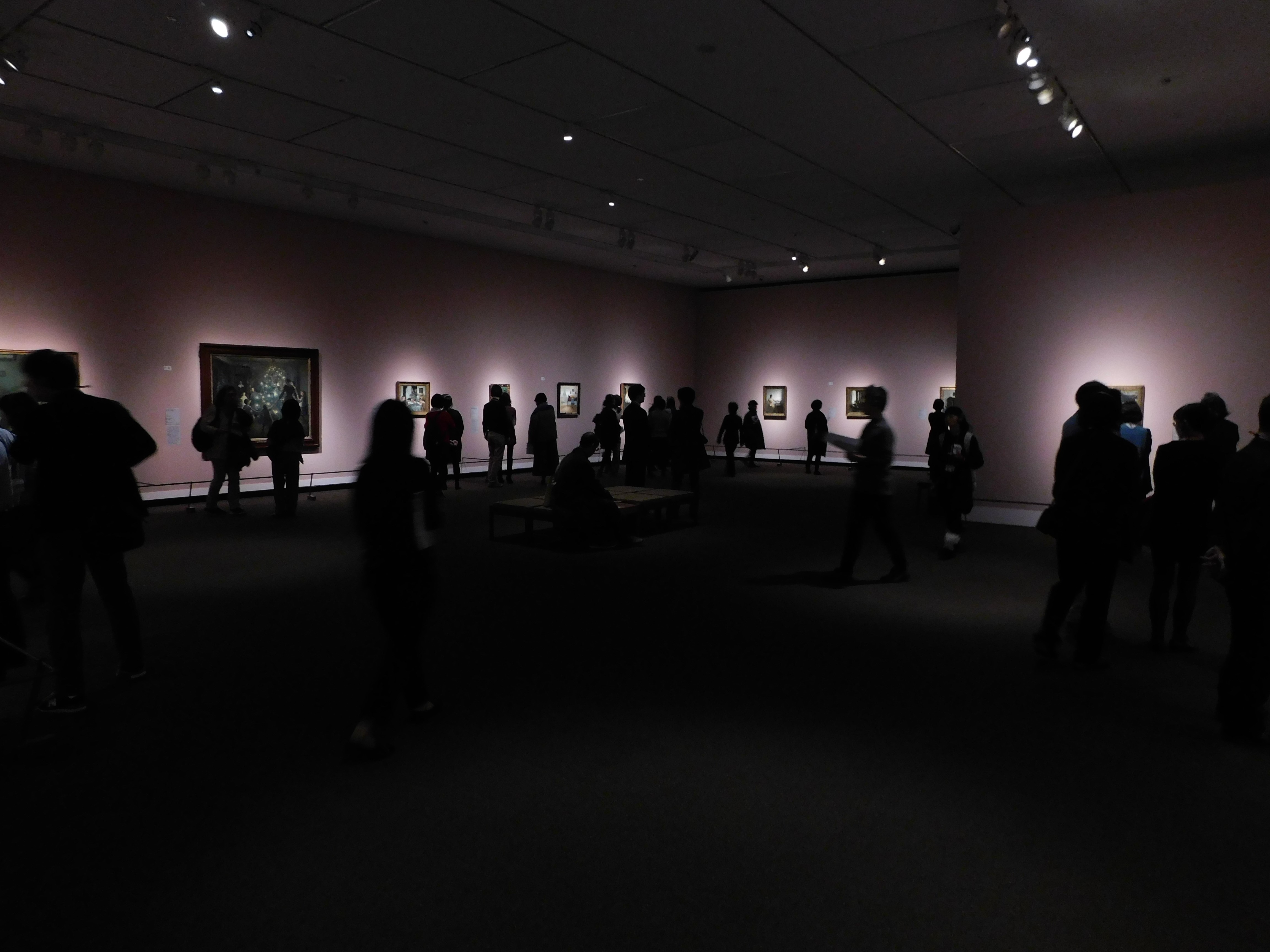
Event summary
| ■ Date: Tuesday, January 21, 2020-Thursday, March 26, 2020 |
| Venue: Tokyo Metropolitan Art Museum Exhibition Room |
| ■ Opening hours: 9: 30-17: 30 (entry until 30 minutes before closing) |
| ■ Night opening: Friday, February 19 (Wed), March 18 (Wed) 9: 30-20: 00 (entry until 30 minutes before closing) |
| ■ Closed: Monday, February 25 (Tue) * However, open on February 24 (Monday / Closed) and March 23 (Monday) |
| ■ Viewing fee: (Same-day ticket) General 1,600 yen / University / vocational school student 1,300 yen / High school student 800 yen / Age 65 and over 1,000 yen (Group ticket) General 1,400 yen / University student / vocational school student 1,100 yen / High school student 600 yen / 65 years old and over 800 yen * Group discount applies to 20 or more people * Free for junior high school students and below * Free from March 20 (Friday) to 26 (Thursday) under 18 years old (born after April 2, 2001) * Free on February 19 (Wed.) and March 18 (Wed.) due to Silver Day. Therefore congestion is expected. * Free if you have a certificate of the physically handicapped, a notebook of love, a notebook for nursing, a book of health and welfare for the mentally handicapped, a book of health for A-bomb survivors (up to 1 person) * Please bring something you can prove |
| ■ Special website: https://artexhibition.jp/denmark2020/outline-en/ |
| ■ Contact: TEL: 03-5777-8600 (Hello Dial) |













